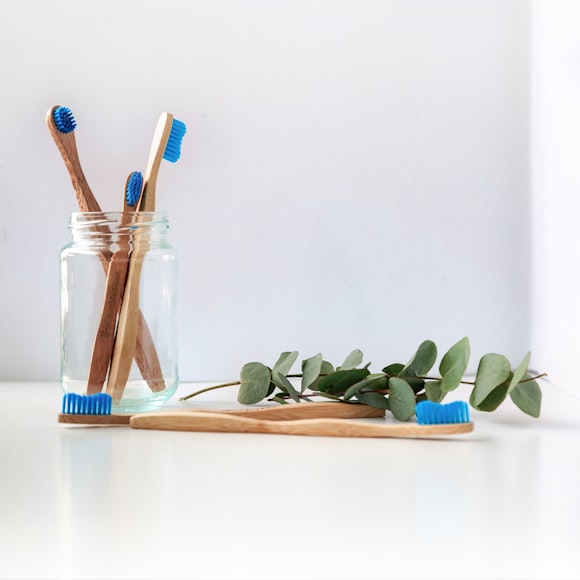For most of the world and especially in the Western Nations, it seems that many are taking dental hygiene to the next level. In some ways, this can be good if done properly however, in other cases this can become detrimental to the long-term health of your teeth.
In the short term, taking care of your teeth even if vigorously, is better than neglecting your oral hygiene. For example, according to The People’s Olive Branch, based on an ADA & CDC report, in the United States, up to 47% of Americans over the age of 30 are experiencing mild to severe gum disease. Furthermore, according to a report published by the Center for Disease Control & Prevention, between 2015 to 2018 up to 25.9% of all Americans between the age of 20 to 44, have some form of untreated dental caries.
Even with this in mind, dentists and oral professionals continue to sound the alarm on too much of a vigorous regime. Your teeth and gums are just as sensitive as many other parts of your body and as such, a proper technique should be used in order to preserve the hard and soft tissues of the gums as well as the enamel’s structural integrity. With this in mind, what is the right way to brush your teeth?
How to Truly Brush Your Teeth?
A high degree of importance should be placed on brushing your teeth at least twice per day, as well as the manner in which you brush your teeth. Many people are not aware that too much of a rigorous brushing regimen will cause your enamel and gums to go through a lot of wear and tear over time. This is not immediately noticeable but if done consistently, by the age of 40 you can begin to see some level of decrease in your gum line and some erosion on your tooth’s enamel.
According to the American Dental Association, brushing your teeth adequately doesn’t mean you need to brush vigorously.
There are some basic steps you can keep in mind to ensure healthy long-lasting gum and enamel integrity.
- Brush your teeth at least two times per day. This is a very simple task, yet, it is so often neglected.
- Replacing your toothbrush frequently after the bristles are worn out is essential, as worn-out bristles do very little to clear debris and germs from your mouth.
- Use a reasonable size and shape for your toothbrush, a child for example should not have a toothbrush with a head that looks like it’s nearly an inch long.
- Do your best to use fluoride toothpaste however, some people are allergic to fluoride. In this case, look for other brands like TOM’s and other ADA-approved solutions.
According to Mouth Health, backed by the ADA, knowing the proper brushing technique need not be a scientific method.
- Keep a 45-degree angle in mind when brushing, and brush softly not vigorously.
- Brush all three surfaces of your teeth, outer, inner, and top surfaces.
- The ADA recommends you brush the inside area of your front teeth with an up and down stroke pattern. However, many esteemed dentists, suggest a circular motion, gently removing any debris attached to the inner areas of your front teeth.
Dental Visits & Their Importance
One downfall of many young and middle-aged adults is the ability to forget dental appointments and basic dental maintenance. In the first scenario, many forget to visit the dentist frequently. A dental visit to the dental hygienist should be done at least 2 times per year. These should take care of basic needs such as:
- Dental examination
- Teeth cleaning to remove plaque.
- And x-rays if needed to detect potentially bigger problems.
According to the CDC, less than 70% of Americans in total had a dental visit in the last year. This can present a problem for those heavy smokers that don’t fit in this 70% rate. One year of smoking nicotine without any level of dental care whatsoever can begin to show dental problems during year two. You may begin to see the initial stages of a dental cavity or maybe you already had one. If so, the extra year of poor oral hygiene could allow the cavity enough time to grow and begin to eat away at the interior of your tooth enamel.
Extreme Dental Care Measures in Motion
The last example stated above would be the extreme opposite of vigorously maintaining your oral health. In some cases, individuals tend to gravitate towards two extremes as it relates to their dental hygiene. In the first scenario, too much damage can happen over time as explained earlier in this article. In the latter option, neglect can be much more devastating to your oral health as well as your overall health.
Neglecting your dental hygiene can cause irreparable damage. Starting with gingivitis, halitosis, gum recession, periodontal disease, and tooth loss. If not treated properly, your tooth loss can further contribute to the deterioration of your jawbone. A smaller portion of the American populace fits under this description however, it is very much likely to happen if neglect continues to persist.
🔗 Other Useful Links
- News By Amurchem
- Free Web Development Course
- All-in-One Exam Prep Portal
- Articles by Amurchem
- Grade 12 Section
- Grade 11 Section
- Grade 10 Section
- Grade 09 Section
- Home and Online Tuition
- Labs By Amurchem
- Science Lectures By Amurchem
© 2025 AmurChem. All rights reserved.






